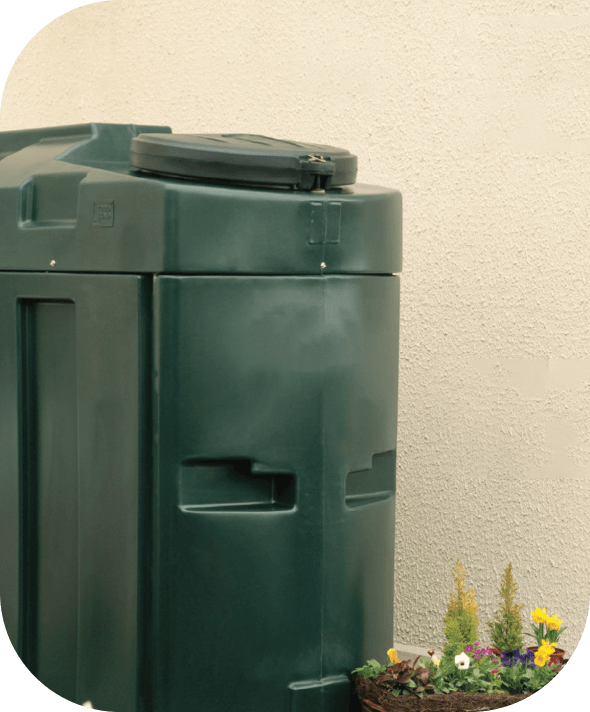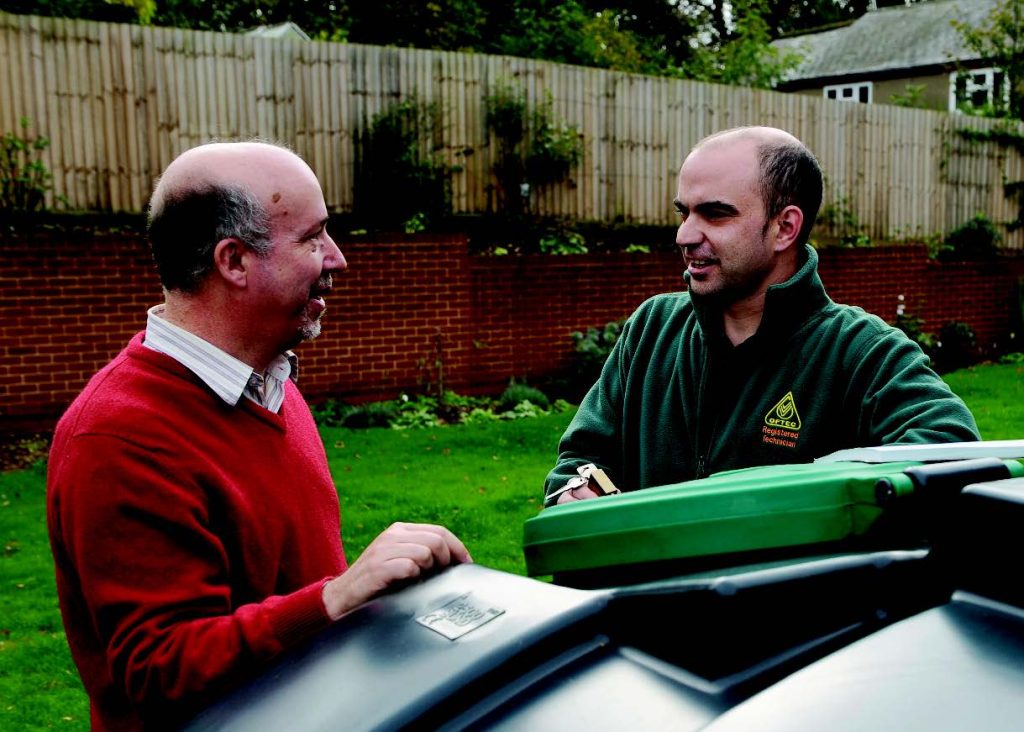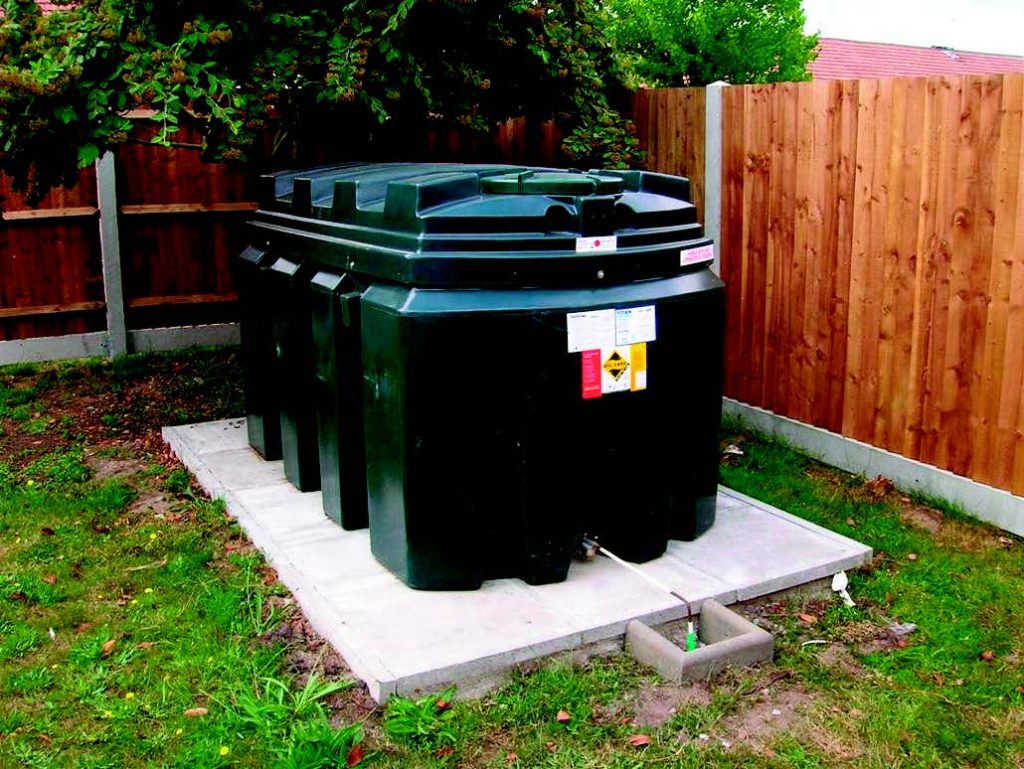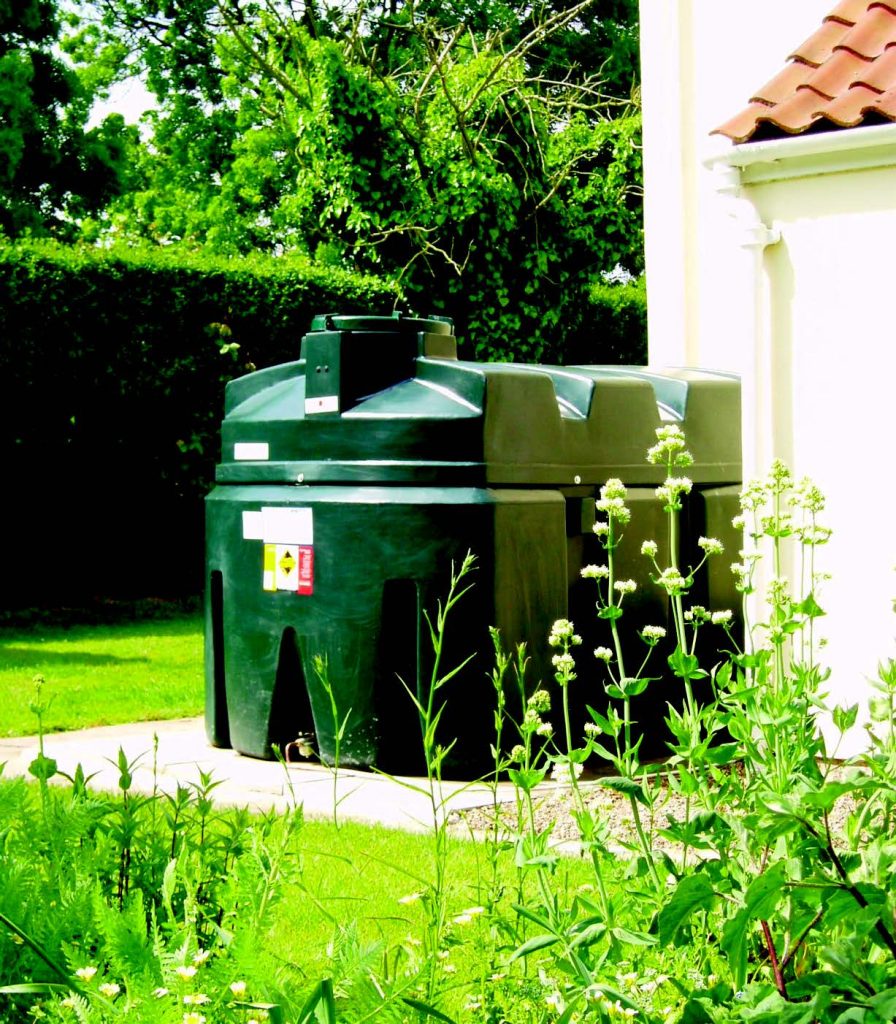OFTEC REGISTERED
BOILER ON THE BLINK? GET IN TOUCH AND FIND OUT HOW WE CAN HELP.

LOOKING AFTER YOUR TANK
How To Look After Your Tank
It is your responsibility to maintain the fuel storage tank on your property – spills and leaks can be extremely costly to clean up and can cause
contamination to ground water supplies or even building foundations. It is important that you check whether your home insurance covers fuel spills or leaks and whether there are any stipulations or limitations to your policy. Tanks should be visually checked by a competent person at the time of your annual boiler service visit. OFTEC also recommends regularly carrying out a visual check between service visits and particularly after periods
of extreme weather conditions as this can put tanks under additional stress. These are some of the warning signs to look out for:
• Rust
• Splits or cracks
• Bulging
• Gauges falling over or not working
• Subsidence on the base
• Sudden increase in usage of fuel
• Tanks overgrown with foliage
• Strong fuel smell
If you have any concerns, contact us. We are a OFTEC registered business who can advise fully.
BUNDED OIL TANKS
We Specialise In Fitting Harlequin Bunded Oil Tanks
ABOUT YOUR FUEL STORAGE TANK
Your Fuel Storage Tank
Modern fuel storage tanks come in all shapes and sizes and can be made from plastic or steel to suit your individual requirements. It is recommended that the chosen tank is manufactured to OFTEC
Standards (OFS T100 for plastic or OFS T200 for steel). In some regions, to minimise pollution risk from fuel spills, it is now mandatory for tanks to be bunded. This means there is secondary containment either integral to the tank or built around it. In other regions your OFTEC registered technician will conduct a risk assessment and advise accordingly, but typically tank installations near a river, well, or any controlled water will require bunding.
Fuel tanks have an expected working life of around 20 years with the risk of a costly tank failure increasing with age. Your fuel tank should be
inspected every year as part of your annual heating system service and your technician will advise you when you should replace your tank.
Your fuel delivery contractor may also highlight issues with your tank and, in extreme cases, could refuse to deliver if they have concerns about the tank’s condition. It is common practice for a contractor to apply a warning notice to a fuel storage tank in addition to reporting any defects to you.

STORAGE TANK STRUCTURAL SUPPORT
Tank Support

If a fuel storage tank is not adequately supported, it could lead to safety concerns, the eventual failure of the tank and even a fuel spill. The base needs to provide continual structural support, even though ground conditions may vary from season to season.
The base should be:
• Adequate for the weight of the tank and its contents
– 1000 litres of fuel weighs just under a ton;
• Non-combustible, imperforate and level;
• Constructed of concrete, paving stones or stonework;
• Large enough to extend 300mm beyond all sides
of the tank.
WHERE TO PUT YOUR STORAGE TANK
Tank Location
There are now very specific rules governing the location of tanks and it’s important to take these rules into account if you are making subsequent changes to your property. The rules are in place for
fire safety reasons and although a fire is highly unlikely to originate in a fuel storage tank, it is very important to protect the stored fuel from fires or heat sources nearby. To protect tanks from an ignition source, tanks should be sited:
• 1.8m away from non-fire rated eaves of a building
• 1.8m away from a non-fire rated building or structure (e.g. garden sheds)
• 1.8m away from openings (such as doors or windows) in a fire rated building or structure (e.g. brick-built house/garage)
• 1.8m away from liquid fuel appliance flue terminals
• 760mm away from a non-fire rated boundary, such as a wooden boundary fence
• 600mm away from screening (e.g. trellis and foliage) that does not form part of the boundary.

TESTIMONIALS
What our customers say?
We would like to thank Mark for his help on our Rayburn before Christmas and subsequent visit today to service our Rayburn. He is very friendly ,and his knowledge is second to none We would highly recommended Gas Mark One as a trusted and professional company Many thanks Vince /Lesley.

Mark came out to us between Christmas and New year as we had no heating or hot water , following this call we booked a full service of our oil boiler , Mark was very professional and took time to explain the workings of our oil boiler a new concept to myself and husband . I would whole heartedly recommend this company .

The engineer, Mark Barrier, was very pleasant, efficient and knowledgeable. My Rayburn is now properly serviced and working well.
The lady in the office was very friendly and helpful. Thanks to both.

SHOWROOM
Rayburn Heat Centre
See the full range of:
- Rayburn Cookers
- AGA Masterchef
- AGA Wood burning Stoves
- AGA Electric Stoves
- AGA Gas Stoves,
- Rayburn Electric Fires
GET IN TOUCH AND FIND OUT HOW WE CAN HELP.




